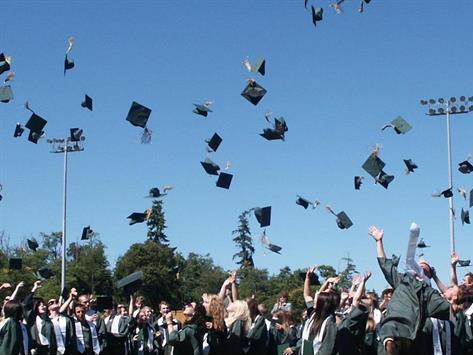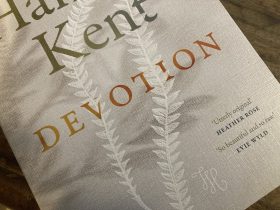Image from Pixabay
The classic assessment tools of exams and essays are patently unsuitable to assessing the work of an emerging creative artist and little help in driving the skills needed to work in the sector.
Fortunately, many tertiary courses in the sector are employing new techniques to evaluate student performance. Doing well in these courses depends less on memory or even outcomes and more on being able to articulate a thought process and demonstrate skill acquisition.
From interactive video art at Melbourne University to creative and cultural industries management at University of Technology Sydney to the Aboriginal Theatre program at Western Australia Academy of Performing Arts, Australian academics are employing new techniques that encourage students to participate in assessment, expand applications for creative practice and prioritise accelerated learning by circumnavigating conventional assessment models.
‘I’m much more about using assessment as a learning tool than a grading tool,’ says Melbourne University’s Dr Roger Alsop. As a multi-disciplinary practitioner of sound and video art, Alsop has a perspective that is partly derived from his understanding of the challenges students face in finding employment in the arts industry after leaving university.
‘The language of the work is as important in generating a career as the work itself,’ Alsop says. He also ranks ‘the process of networking and the process of figuring out where you sit in the system,’ as equally significant.
With these factors in mind, Alsop structures his assessment criteria around the artist’s rationale for the work, as well as incorporating components of self-assessment and peer critique.
‘They have to say why they think the work’s a good work. They have to be able to put that rationalisation within the history and the development of the work and consider the quality of the work in a global context. So if someone’s doing an interactive video work then they would have to consider why their work stands up next to Bill Viola’s.’
Alsop rejects the suggestion that this assessment methodology privileges good spin.
‘I try and keep it down to statements of fact,’ he says. ‘It’s about the quality of the work and not the quality of the description.’
To this end, Alsop gets his students to examine a generated artist’s statement as if it’s an artwork. ‘They then become aware well of how that method of rhetoric can be very easily seen through,’ he says.
By freighting assessment around self-assessment and peer critique, Alsop further emphasises the fundamental importance of artistic process and communication. In some of his classes, 40% of a student’s grade is their commentary on other people’s work.
‘I also make sure that up until final assessment, nothing is called an assignment and everything’s called a study. I really try and ensure that there’s no personal investment in what they’re doing. They’re actually exploring an idea rather than exploring their artistic practice. It frees everybody up so much,’ he says.
Despite the transparency in assessment criteria, there are still ways to impress this lecturer.
‘I’ve seen some works that are just astounding,’ Alsop enthuses. ‘Generally it’s the way that someone’s solved a problem, how they actually go about making an idea work—the elegance of it,’ he says.
This does not mean Alsop is a soft touch.
‘If the student thinks that they’re coming in to be nurtured in their current state, that’s probably not a good start. They’re actually coming in to have the work that they’re doing interrogated, made more robust, made more clear,’ he says.
‘The whole process is to make sure that the student gets out incredibly good work that’s going to be considered incredibly good within the international industry or among international peers.’
A student’s ability to problem-solve is also nominated as a key factor in driving higher grades by Associate Professor Linda Leung of UTS’s Masters of Cultural and Creative Industries. In a course designed for people who have trained as creative practitioners but are now looking to develop more skills around the business and managerial side of their sector, Leung encounters a range of artists seeking to supplement creativity with innovation in industry contexts.
‘Being creative does not necessarily equate to being entrepreneurial,’ Leung says, although her course is designed to foster this transition.
Leung names entrepreneurial heroes Steve Jobs, Richard Branson and Mark Zuckerberg as ‘misfits’ who nevertheless identified and solved a problem within the pop cultural sphere.
‘It’s how you think about problem-solving,’ she says. ‘How might you address a problem that’s faced by a particular market segment or group in the community and through developing a solution to that, turn it into a business. Where do you see the business opportunity through solving a problem?’
According to Leung, success comes when students conceptualise broader applications for their creative practices.
‘The kind of ah-ha moment that we’re aiming for is when they begin to think innovatively about how to financially sustain their own practice,’ she says.
While students are encouraged to submit work in their chosen medium, whether it is filmmaking or acting or design, the ability to work collaboratively is also an integral part of assessment.
‘We have a hatchling program at UTS which is like a pre-incubator program where students work in teams and they’re cross-disciplinary teams. So it’s not so much that they need to think up an idea individually and try and make that happen. It’s how do you do that collaboratively and leverage the different skill sets that people bring to the table?’
By embedding collaborative work into the assessment, Leung enables students to practice the program’s pedagogical ideals.
‘They need to be open to thinking beyond their own sector,’ says Leung of her students. ‘Rather than thinking of creative industries as little silos of musicians, designers and TV people, they need to be thinking about a career where they can move across these industries quite easily.
‘It’s about thinking about how to acquire those transferable skills that they can take with them. The program starts opening their eyes to far more possibilities than they previously thought there were,’ she says.
At the same time, Leung is the first to acknowledge that, in general, assessment does not take place within a cultural vacuum.
‘The students who tend to perform best are local students with English as a first language,’ she points out. ‘The students that struggle are international students who are forced to study full-time in a second language. And that’s after moving to another country, having to settle there, having to find housing, having to get to grips with how things work here.’
The coordinator of WAAPA’s Aboriginal Theatre program, Rick Brayford, knows all about the difficulties of assessment based purely around Western paradigms. His program is specifically set up to cater to the needs of Aboriginal and Torres Strait Islander students, although, as he says: ‘We train actors who happen to be Aboriginal.’
‘The assessment is the residue for us,’ Brayford says. He’s referring to the more primary considerations of a rigorous application, training and employment process that his students undergo.
And because the program receives a wide range of applicants from interstate, regional and remote areas, auditions are impossible. Instead of which, interviews are mostly conducted by phone.
‘We test reading and sight-reading skills, which says a lot about certain academic readiness for the program,’ Brayford says. ‘We can tell a lot without having to actually formally audition and put them on the floor and get them to sing and dance and do an act.’
Nevertheless, Brayford recalls cases where applicants have been illiterate or have never seen a play before. The same students have gone on to study in the program and become successful, paid actors.
‘There’s a project going on here in Perth now with Yirra Yaakin where the particular student came in from Halls Creek from Bunuba Country and pretty much could not write his own name and found it just as hard to read his own name, so to speak, metaphorically speaking.
‘And he’s been working on some wonderful projects, great paid work, wonderful professional entitlements, same as anyone else, and he’s down here working on a big mainstage piece at the moment that he co-wrote and is starring in which goes up in June or July,’ Brayford says.
‘It’s tougher for those students,’ he acknowledges. However, the program works intensively with ECU’s literacy experts. Brayford himself has a teaching diploma in secondary school English and has extensive experience working in remote areas.
In cases where applicants are not initially assessed according to conventional Western yardsticks, Brayford identifies hunger, determination, creativity, understanding and depth of emotion as key indicators that enable alternative access.
‘We have so much success when we ask, “What brings you here? Why this application?” And a lot of times honestly we get told: “It’s just a feeling. I’m looking at that on telly and I’m going, I can do that’”
‘Sometimes it is a feeling with a lot of young people, it doesn’t matter where they come from, and we can pick up on that. We can go, right there’s something going around inside them where they really want to give this a crack and really want to try hard and maybe they’ve got nothing else maybe going for them,’ Brayford says.
Once students gain access to the course, technique factors as the central concern of teaching staff.
‘Ultimately acting’s a craft,’ Brayford says. ‘The student brings their talent and their creativity to it. What we do is we nurture those two things while we hammer in the technique.’
He emphasises sight-reading as a critical factor in making an acting career.
‘No actor is a good enough sight-reader. And sight-reading can lose a lot of jobs. We put a lot of effort into all the students’ sight-reading and writing skills in terms of articulating their thoughts because that’s what helps them in terms of their emotional process and their psychological understanding of acting.’
For Brayford, seeing his students become employable is generally more satisfying than handing out high distinctions.
‘If they don’t pay a parking fine or a library fine, they don’t get their piece of paper anyway,’ he says. ‘But they might get a job. We might help them into a pro-am job in the Blue Room. And they go in there and they work hard with a good director and they make $200, but they’re one step closer to making $400 and being out of the pro-am and into the pro.
‘They come out of the course being ready to compete and win places which is awesome,’ he says.





